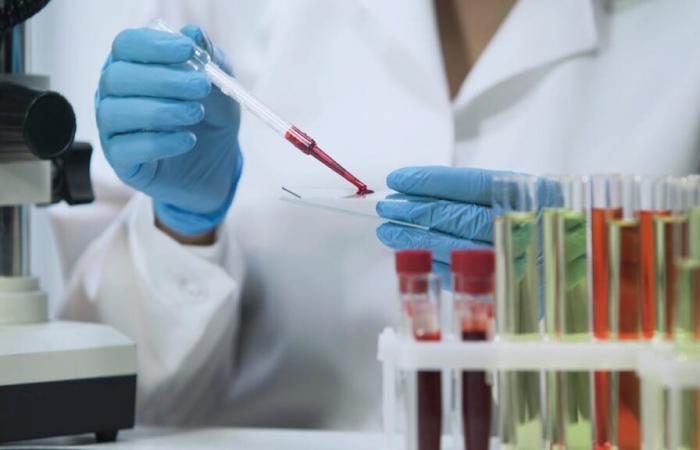The HIV/AIDS Pandemia, the most durable and one of the most lethal in the history of humanity, is in a crucial moment. Some 40 million people have died from HIV -related causes, according to WHO. Over time, references of their presence in 1976 have been discovered, and up to five years later, the first cases of AIDS were not diagnosed. A lot has advanced in research, and the life of people with HIV has improved radically. They are data for optimism, but the race so that HIV ceases to be a pandemic is in its final stretch and it is necessary to accelerate to reach the goal. Today the objectives set for 2030 by Onusida, the United Nations Joint Program on HIV/AIDS, which aim to reduce new infections, discrimination and death -related deaths, seem realistic. To get there, the 95%standard is imposed:
Reach 95% of people with HIV diagnosed, which means reducing the number of people with HIV and do not know.
- Reach 95% of HIV diagnosed people in treatment, which entails increasing access to medication in all types of populations.
- Achieve 95% of people in treatment with undetectable viral load, which requires maintaining the number of people in treatment.
- Get 95% of people who are at risk of acquiring HIV access some type of prevention.
The Executive Director of Onusida, the Ugandesa Winnie Byanyima, even says that “pandemic can cease to be a threat to public health at the end of this decade.” But, according to experts, we live in a decisive moment, because there are still obstacles to overcome and challenges to be fulfilled. Above all, advance in education, prevention and access to treatments must be advanced, something that can be affected if investment in HIV care is limited. This is noted by Lucio García Fraile, an attached doctor of the Internal-Infectious Medicine Service of the Princess Hospital of Madrid: “We are better than we have ever been, but things can always be twisted if we do not follow this good rhythm.”
How has it been here? The great advances
Thanks to the use of appropriate treatments, HIV has become a chronic infection. It can be said that the life expectancy of someone freshly diagnosed, once it is in treatment, is similar to that of a person without HIV, according to Jorge Garrido, executive director of positive support, NGO that has been fighting for the rights of people with HIV more than 30 years. “44 years have passed since the first diagnosis in Spain,” Garrido recalls. “Today, an HIV person in treatment achieves what we know as INDECTIVABILITYboth the amount of virus that is not detected in blood is reduced. If your treatment continues and remains undetectable, it does not transmit the virus to other people. That is, undetectable is equal to non -transmissible (i = i) ”.
Esa INDECTIVABILITY It has been one of the great recent achievements in scientific research around HIV. “It has been the most groundbreaking of this decade, no doubt,” says García Fraile. “In 2016 the studies were published Partner 1 y Partner 2which showed that a person with an undetectable load of HIV does not transmit the virus, ”recalls García Fraile. Two decades before there had Control the virus, or that the antiretroviral treatment is only one pill a day: it is achieved with a combination of four medications that for the first time includes a protease inhibitor, which prevents since the mid -last decade that the virus becomes resistant.
Onusida’s objectives in Spain
Is objective 95-95-95 viable in Spain? It is estimated that there are around 150,000 people with HIV in our country, and that daily between 8 and 9 people (around 3,000 a year) are diagnosed. García Fraile says that Onusida’s objectives are practically achieved in Spain, but we must not settle. You have to continue acting on them: the first objective requires finding people who have infected, which is not always easy. Many do not know their serological status. The second and third go hand in hand: once the person knows his status, if he is put into treatment, it is achieved that the desired reaches INDECTIVABILITY. They remain to be reduced by around 3,000 new infections that are annually, a fact that has been stable for 10 years. And it is possible.
-There are already cities in Europe that have managed to reduce new HIV infections to figures close to zero and around the world efforts are being made to reach those goals. In Africa, where pandemic has affected virulence for years, it takes decades working with positive results. “But new gaps open in other territories, such as Latin America, the Middle East and Southeast Asia. There the incidence is increasing,” says García Fraile. And it is possible, according to him, that the efforts used in Africa to contain the virus are lost due to the decrease ⎯o directly suppression of the items for international cooperation aid by the United States.
What challenges do we face to end the pandemic?
Jorge Garrido, positive support, is clear that the end of the pandemic looks closer than ever. “This is an HIV phase in which for the first time we glimpse a horizon of eradication or, at least, control as a public health problem, with the implementation of all available tools.” One of the keys, García Fraile adds, is to reduce the number of person who have HIV and do not know. “It is essential to promote diagnoses.”
The doctor also highlights the importance of prevention: preventing those who do not have, continue and continue to be a universal priority. In this process, pre -exposition prophylaxis, known as PREP, explains. “In the last decade, HIV prevention with PREP constitutes the most effective tool we have.” PREP is another pharmaceutical milestone of scientific research that has allowed the transmission to people who have not infected. However, there are still between 8 and 9 new infections per day. Because there are still populations to which the available prevention tools do not reach.
Jorge Garrido delves into this issue: “It is necessary a real and effective implementation of combined prevention and therapeutic innovation, which includes from classical methods such as preservative, to current tools such as preexposure prophylaxis (PREP), posttexposition prophylaxis (PEP), reduction of risks and damage and key strategies such as i = i. All this must be accompanied by real access to innovations Therapeutics adapted to the needs of people with the greatest risk of acquiring it. ”
A comprehensive sexual education, says Garrido, is revealed essential to reduce the stigma that people with HIV have dragged for four decades: for many years it was more than a label for them. Also to achieve the objectives of Onusida in 2030, including the end of new infections and deaths of HIV. “A firm commitment of institutions is essential: stable financing, effective coordination between public health and associative fabric, and a commitment determined by community participation.” Both experts emphasize that today you know what needs to be done and the tools that are needed.
García Fraile points out that UNAIDA puts ambitious objectives to promote progress. “Any progress, however small, represents a victory,” he says. However, global progress cannot be lost. The figures show that, although the quality of life has improved, the volume of infections has been maintained almost stable for a decade. “We need to look at HIV and sexual health in general from a new paradigm: more preventive, more human and focused on integral well -being, where mental health has a central place,” explains Garrido. “To make this a reality, firm political wills are needed and an acceleration determined in the implementation of the tools that already exist. It is not about inventing new solutions, but about making effective those we already have, through a clear and sustained commitment. The time to put an end to HIV is now,” he concludes.






